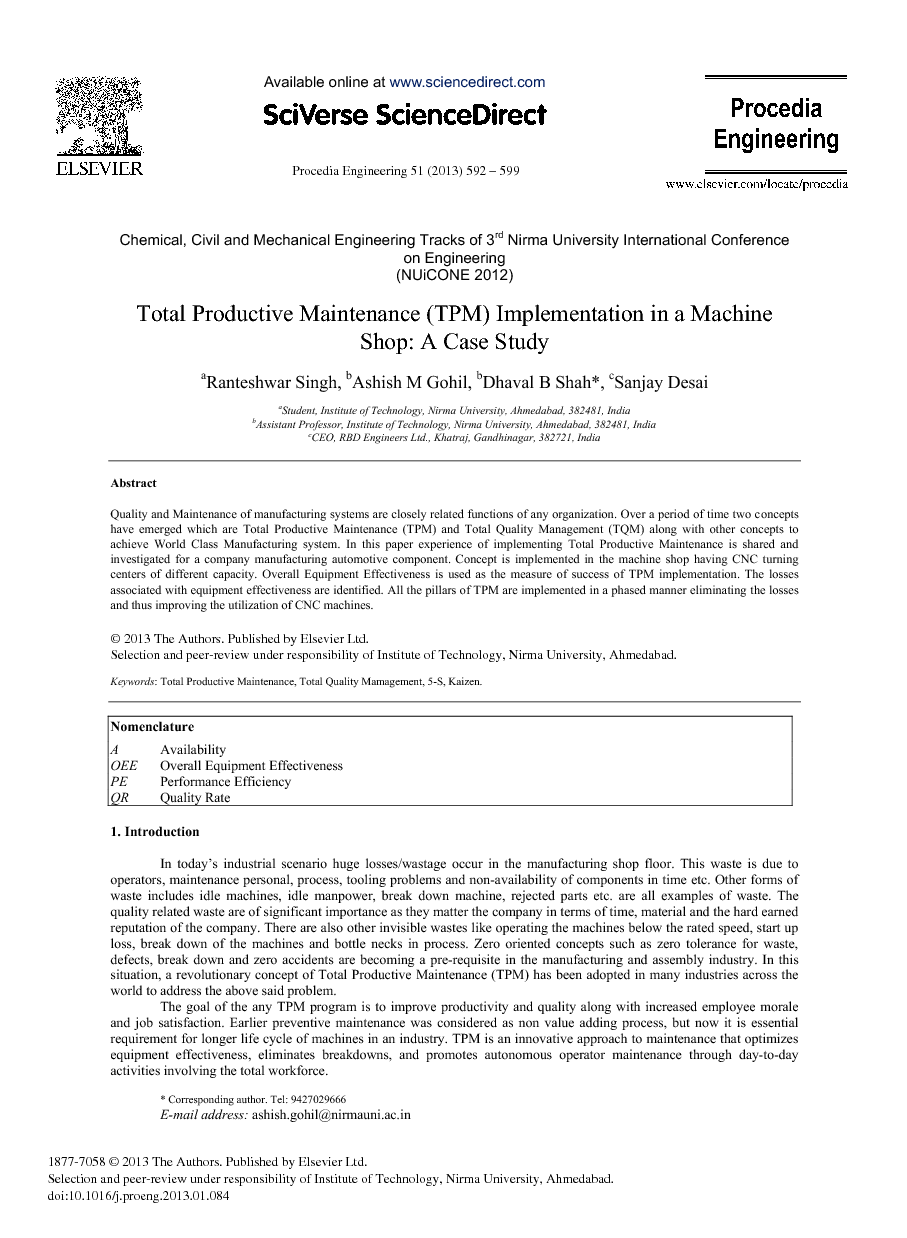ترجمه فارسی عنوان مقاله
پیاده سازی نگهداری فنی با بهره وری کامل در ماشین آلات فروشگاه : مطالعه موردی
عنوان انگلیسی
Total Productive Maintenance (TPM) Implementation in a Machine Shop : A Case Study
| کد مقاله | سال انتشار | تعداد صفحات مقاله انگلیسی |
|---|---|---|
| 21949 | 2013 | 8 صفحه PDF |
منبع

Publisher : Elsevier - Science Direct (الزویر - ساینس دایرکت)
Journal : Procedia Engineering, Volume 51, 2013, Pages 592–599
ترجمه کلمات کلیدی
5 نگهداری و تعمیرات بهره ور -
مدیریت جامع کیفیت -
کایزن -
کلمات کلیدی انگلیسی
Total Productive Maintenance,
Total Quality Mamagement,
5-S,
Kaizen,

